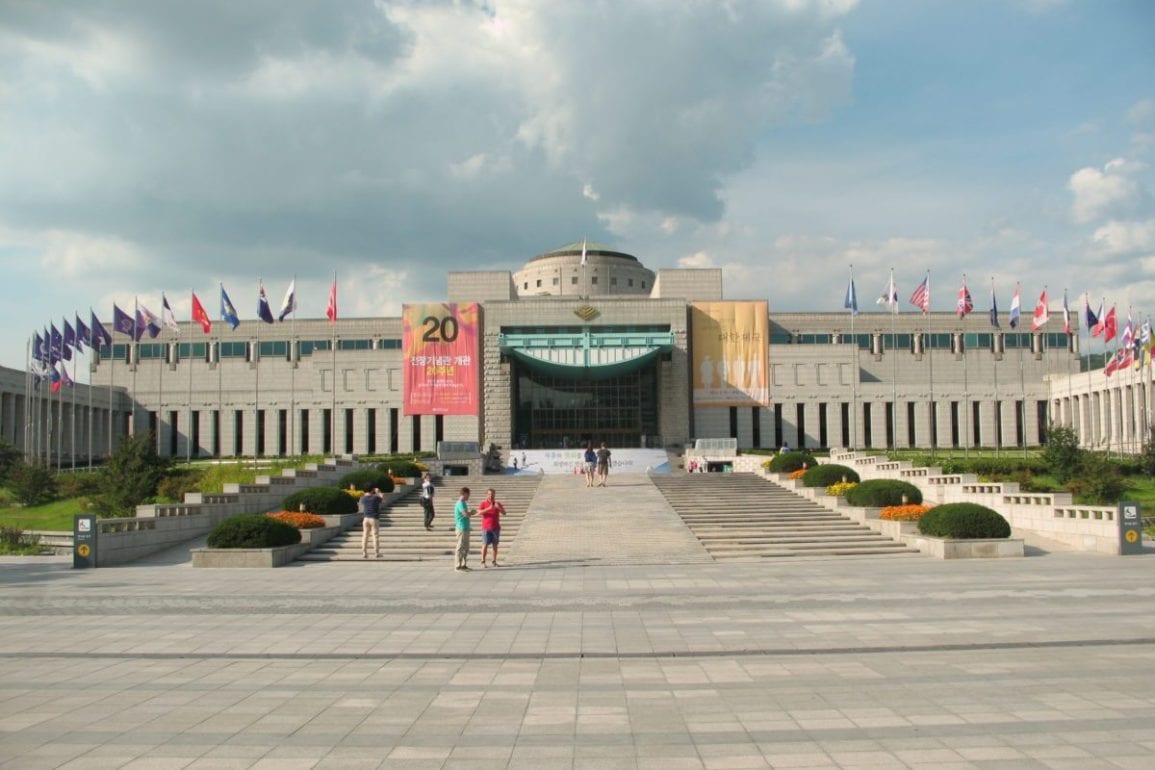The War Memorial of Korea
Words and shots by Ron Roman
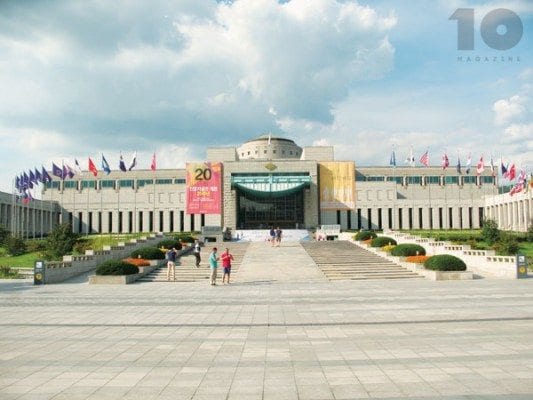
If you have some spare time, visit the War Memorial of Korea next to US Eighth Army Garrison (USAG) Main Post in Yongsan-gu. It’s open 9 am to 6 pm, except on Mondays when it is closed. You’ll need at least several hours to go back in time and relive the sobering experience of war. Since 2010 admission is free.
This year marks its 20th anniversary with numerous new exhibits and attractions. (I first visited when it opened and can vouch for that.) Constructed on what used to be the Headquarters, Republic of Korea Army (having moved to its current location in Daejeon in the early 90s), this gargantuan three-storied architectural marvel stands as testimony to South Korea’s wartime past (ancient and modern) and resurrects the chronology of events leading up to and following the Korean War of 1950-1953.
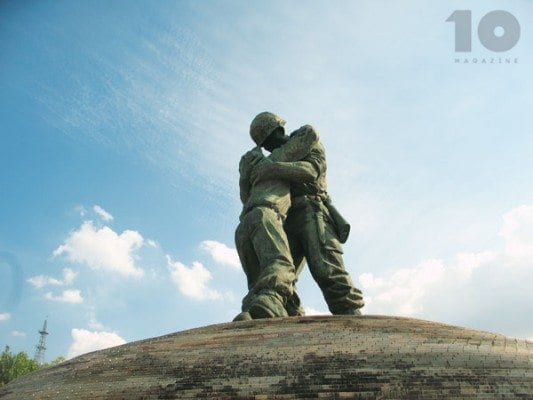
Enter the complex from the Main Gate opposite the Korean Ministry of National Defense building across the street. Behold the imposing granite obelisk (the Korean War Monument) as you stride toward the main building. By the monument, you’ll find listed all 21 UN-mandated nations which came to the defense of the Republic. As you cross the bridge arching over the Reflecting Pool, you’ll see the circular Peace Plaza. Flanking either side of the main building is the Monument of KIA (Killed-in Action) gallery listing those who perished in the Korean and Vietnam Wars. (Factoid: Not well known, but South Korea lost 5,000 men in fighting alongside their US ally in Vietnam; Korean veterans are yet often bitter over their perceived non-recognition and ill treatment at the hands of their government.) Off to your left is Peace Clock Tower, a statue depicting two girls symbolizing Korean sympathies for reconciliation. A stone’s throw away is the Statue of Brothers. This, too, stands for reconciliation. This statue memorializes the true story of two brothers fighting on opposing sides. Construction began in May 1992; it was finished exactly two years later. It’s time to enter the main hall…
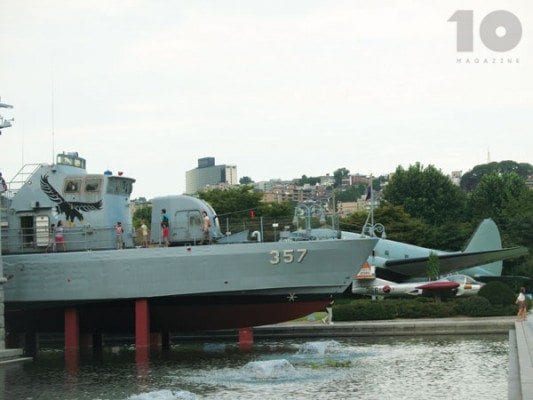
As you walk up the stairs leading into the main building, observe that you’re on the second floor. To your left is a small information booth supplied with maps and brochures in Korean, Chinese, Japanese and English. The attendants ordinarily are conversant in English. Take a guidebook or two for easy touring; the building is huge. Help yourself to the “Smart Exhibition System” (SES) using your phone for an audio tour also given in additional languages. (SES is explained at the booth.) Let’s start our inside tour….
Straight ahead and to your right, you’ll see the colorful and enormous Tiger (Jin-Ko) Drum symbolizing the intrepidity of the Republic of Korea Armed Forces. Turn left to walk into the first of the three Korean War Rooms. Eerily dark and divided into 10 compartments or “zones,” its weirdly realistic assortment of miniaturized war room and diorama settings sucks you back in time and places you in world events leading up to the war and ultimately into the heat of battle itself. A major room signboard lists primary world figures involved in the war and outwardly describes North Korean founder Kim Il-sung as “a war criminal.” (If memory serves, this blunt condemnation was absent at the time of the Museum’s initial opening.) Notice that most signboards are in English in addition to Korean.
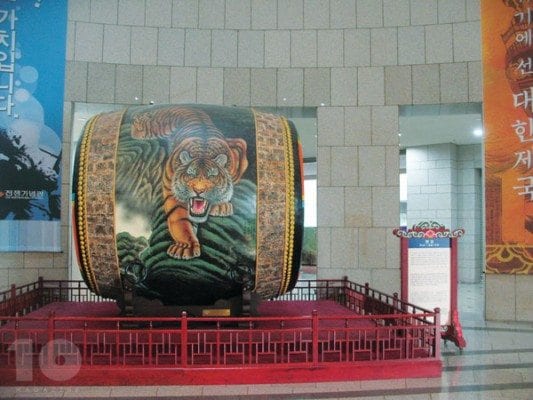
Experience a wisp of the macabre as you come upon the reunion of two brothers 60 years-plus after the war in a very lifelike reproduction of a war remains recovery site. Walk over the reconstructed skeleton of a soldier lying in a half-covered grave, separated by only glass flooring, with the skull positioned on its right side. Spotlights throw off eerie shadows. Read the remarkable story leading up to the discovery of the remains.
Continue along the darkened corridors snaking through the first room bringing you back in time into the heat of battle. Observe a multitude of scenes highlighting events leading up to the early morning hours of June 25, 1950 when the war exploded. Bear witness to photos of detailed records of secret meetings between the North’s Kim Il-sung and Russia’s Joseph Stalin, and later Kim and China’s Mao Tse-tung, as they laid the foundation for war. UN emergency meetings in response to the Communist aggressors are meticulously detailed in myriad photos and transcripts. Lives of what would later become the battlefield’s key military leaders are elaborately chronicled: the North’s Kim, the South’s Paik Sun-yup (who at 32 became the country’s first four-star general and is still alive). The US’s side includes Douglas MacArthur, Matthew Ridgeway, Walton Walker and John H. Church (whom I portrayed on the silver screen in Lee Jae-han’s 2010 war epic 71: Into the Fire). See replicas of MacArthur’s famous gold-trimmed hat, aviator sunglasses and corncob pipe. Before leaving, take in audio-visual tours of MacArthur’s historic September 15, 1950 Incheon Landing and subsequent December 1950 Heungnam evacuation. English audio transcripts are available. Before exiting the room, observe the rifles, artillery pieces and replicas of village homes transporting you back in time. And don’t miss the lifelike replica of the Armistice Agreement Room where the Armistice was signed July 27, 1953.
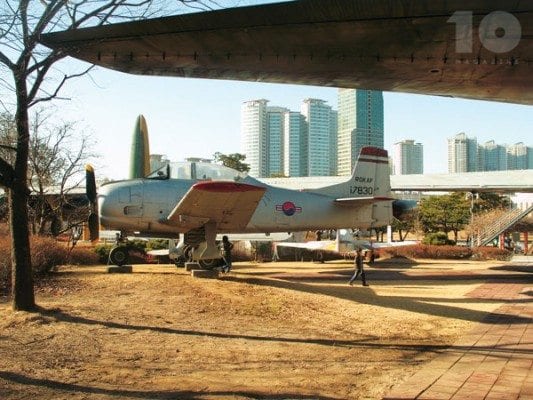
There are a Museum Cafeteria on the third floor and a Cafe in the Outdoor Exhibition Area as well as a Cinema and outdoor displays of actual Korean War weapons to take in while you’re there.
You won’t be disappointed.


